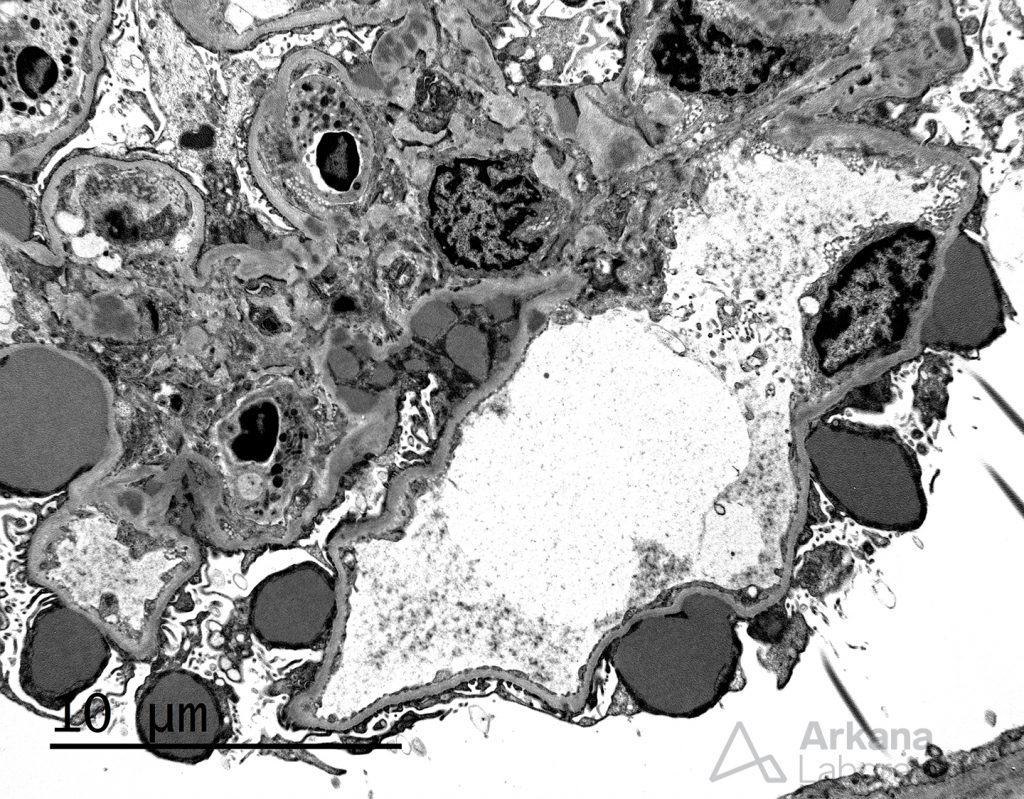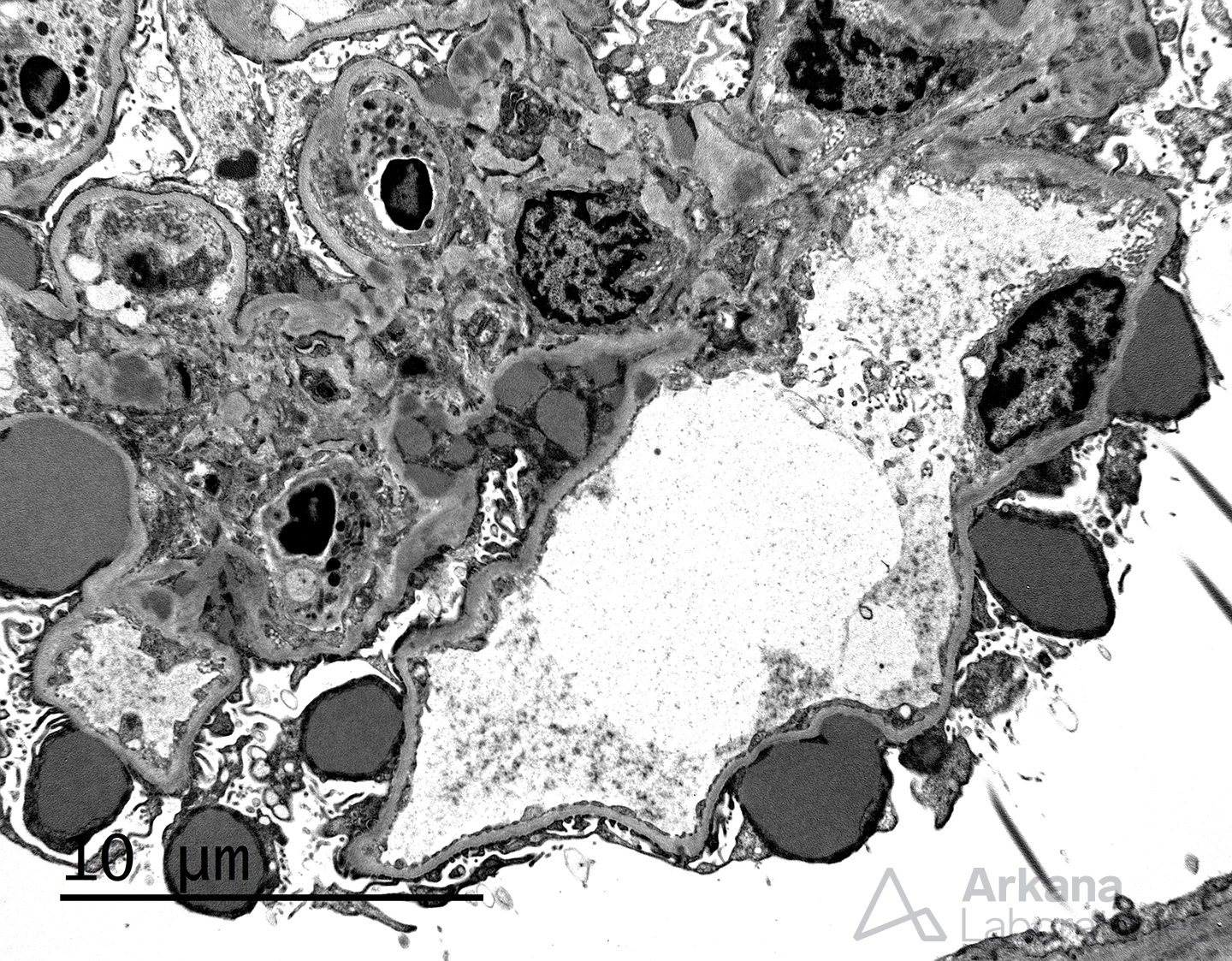
The depicted electron micrograph shows numerous, large and irregular subepithelial deposits which protrude from the glomerular basement membrane towards the urinary space. The deposits are overlaid by significant epithelial foot process effacement and they lack definitive substructure. This type of deposits has historically been described as “hump-like”. While they are most commonly seen in the setting of infection-associated glomerulonephritis, they are by no means specific, and may be seen in other entities, such as C3 glomerulonephritis. When scarce, these deposits may be limited to the hinge region of the glomerulus. Over time, subepithelial hump-like deposits may become electron-lucent and eventually disappear; however, irregularities of the underlying glomerular basement membranes may persist.
Quick note: This post is to be used for informational purposes only and does not constitute medical or health advice. Each person should consult their own doctor with respect to matters referenced. Arkana Laboratories assumes no liability for actions taken in reliance upon the information contained herein.


